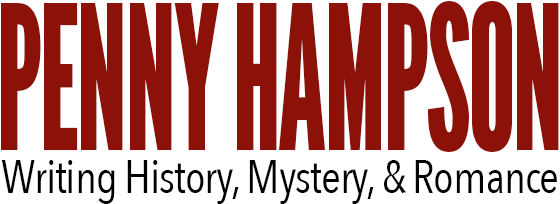Thank you for joining me on the second part of my trip to Yorkshire, the White rose county. You can read about the first part of my trip here.
Having completed our three day stay in York, husband and I travelled north to Pickering, a small market town on the border of the North York Moors National Park. We stayed in a historic 16th century coaching inn which now operates as a modern hotel.
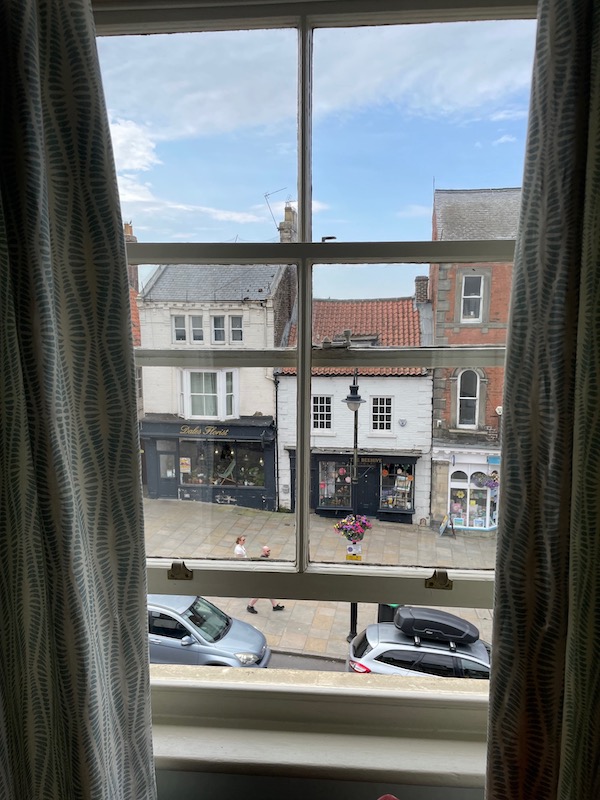
Our room was on the top floor under the eaves overlooking the main thoroughfare.
In the past Pickering was a centre for mail coach traffic and the streets must have been quite busy. This was not the case during our stay, as you can see from the photo taken from the bedroom window.
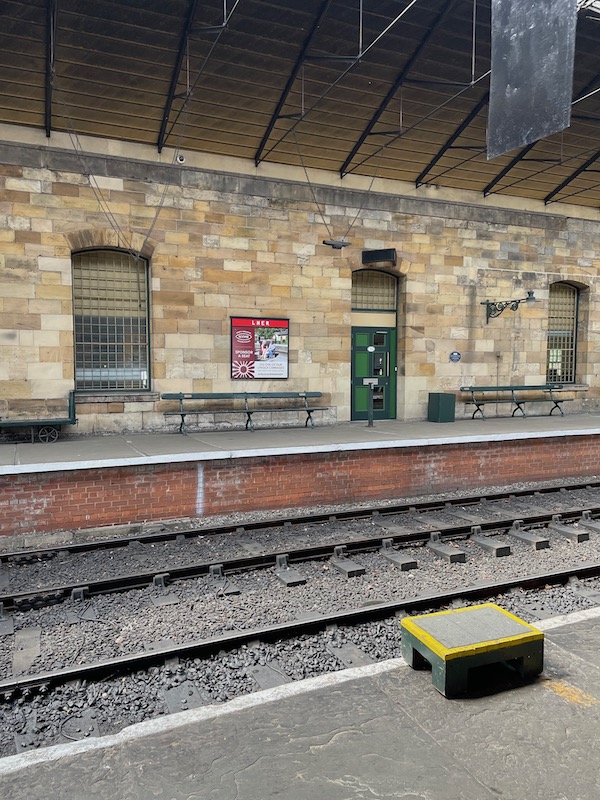
Pickering is home to a heritage railway station for the North Yorkshire Moors Railway, operated by a charity. It claims to carry more passengers than any other heritage steam service in the UK – quite a feat for a railway that is entirely staffed by volunteers.
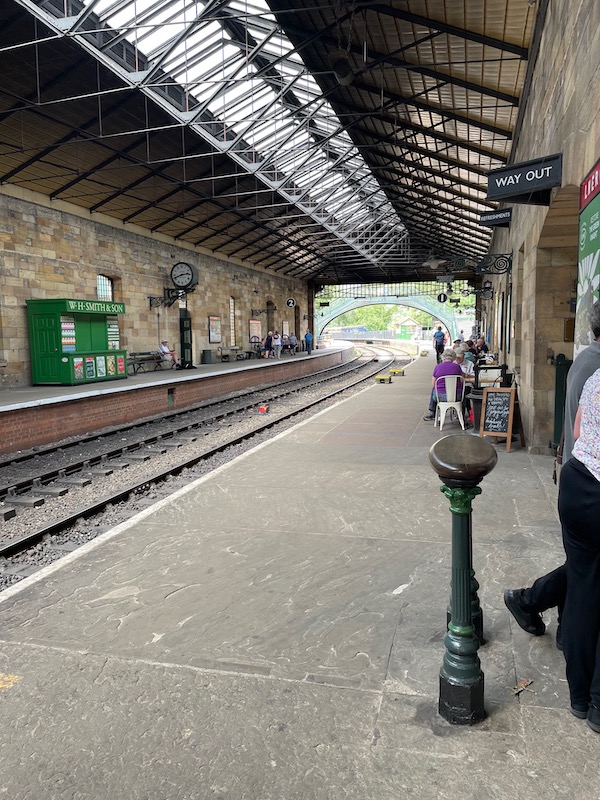
Sadly, we didn’t see any steam trains running while we were there. This was because the hot weather had dried out the surrounding countryside and the risk of a random spark from a steam engine causing a wildfire was too great.
With my nose for books, it will come as no surprise that I discovered an amazing secondhand bookshop (Yorkshire Quality Books). It was located just across the road from Pickering Station. A word of warning – the owner only deals in cash purchases, no credit cards accepted here. Having said that, the prices are not high. I bought three quality hardback non-fiction books for under a tenner.
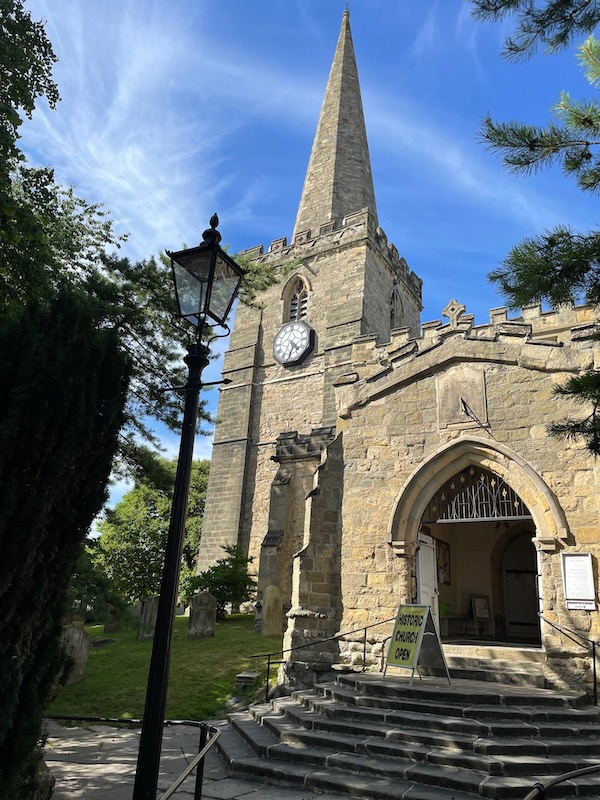
The parish church of St Peter and St Paul in Pickering is definitely worth a visit. It is a Grade 1 listed building and contains an amazing array of medieval wall paintings said to be the best preserved in the UK. Believe it or not, their rediscovery was an accident. Originally painted around 1450, they were covered up during the Reformation and only found again in the mid 19th century when plaster fell from the wall. The paintings depict scenes from the lives of the saints. My first photo shows images of George and the Dragon, St Christopher carrying the Christ child, and the beheading of John the Baptist.




There are also two interesting stone monuments inside the church; Sir William Brus is depicted as a knight with his legs crossed and an unknown knight and his lady lie peacefully side by side.
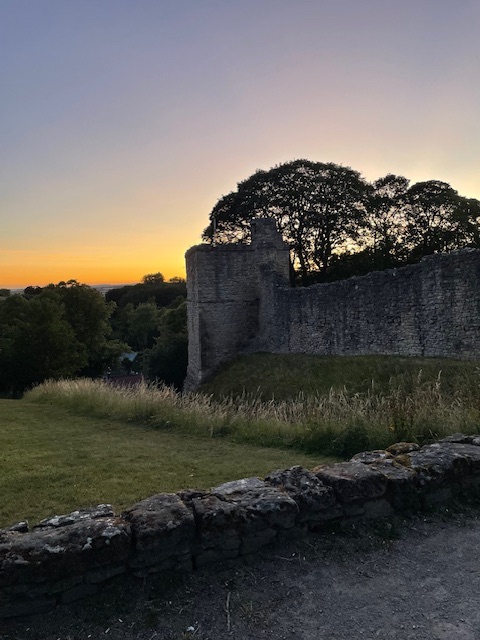
Pickering also has a castle which we only reached after it had closed for the day. Originally constructed in wood by the Normans and rebuilt in stone during the 13th and 14th centuries, it is pretty much a ruin today. Nevertheless, its brooding towers and walls looked impressive outlined against the the setting sun.
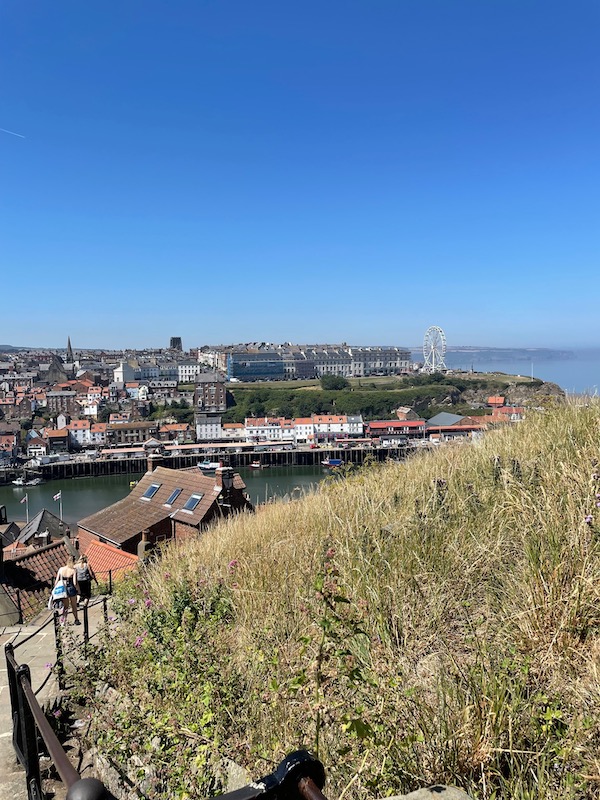
The following day we headed to the coast and Whitby. We didn’t visit the Abbey and all the other ‘must see’ spots this time because we’d seen them on a previous visit. However, we did climb the 199 steps up to the top of the East Cliff and explored the parish church of St Mary.
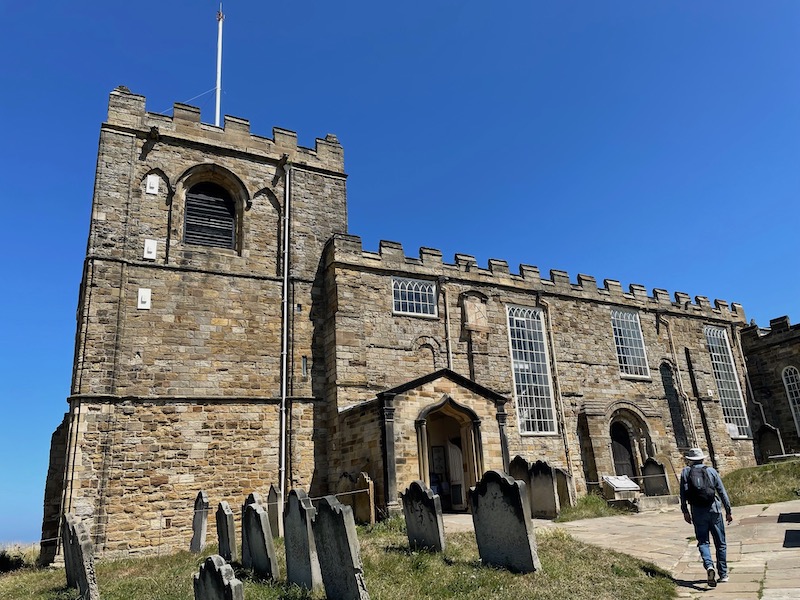
The oldest parts of the church date from the 12th and 13th centuries but the interior with its box pews mainly dates from the 18th century. Outside, there are amazing views from the churchyard across the town and the mouth of the River Esk.



Back down to the town again and it was time for a coffee before a visit to the Whitby Lobster Hatchery, who do important conservation work maintaining the UK’s lobster stocks. As well as tiny baby lobsters, we met Melvin, a mammoth lobster said to be about forty years old.


Next up was a stroll along the West Pier. The Whitby Memorial Bridge links the West Pier to the pier extension and is a memorial to two soldiers from Whitby who lost their lives in Afghanistan.

A quick ice cream and then we explored the less touristy west side of Whitby. We reached this by climbing up a steep footpath. A landmark whalebone arch at the top of the path commemorates the whaling industry, which was so important to Whitby’s economy from the mid 1700s until the early 1800s.
Another important factor in the town’s economy was the discovery of three mineral water springs during the Georgian period. This helped Whitby to develop as a spa town and promoted the building of lodging houses and hotels mainly on the West Cliff. Whitby even boasts an impressive Royal Crescent of Regency houses to rival the Royal Crescent in Bath.
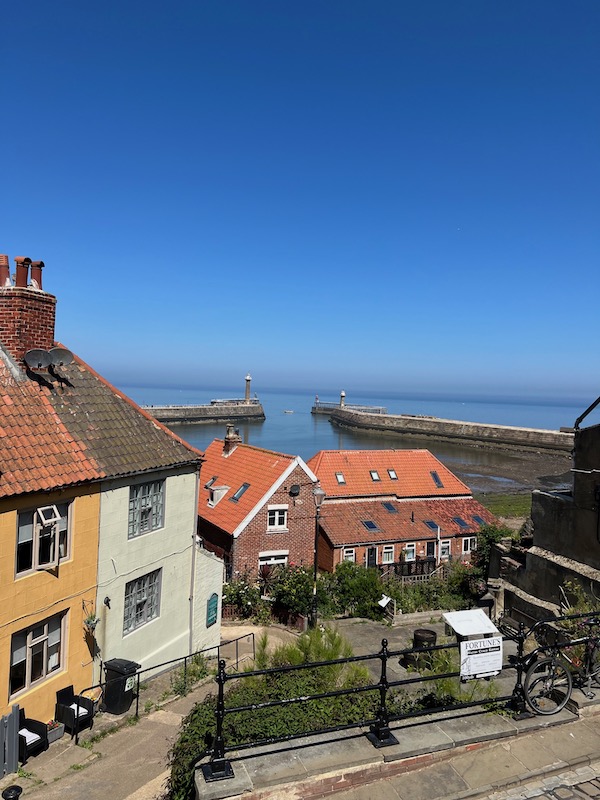
After several hours of walking and exploring it was time for something to eat, and being by the seaside, we had to have fish and chips. The Magpie Café was an excellent choice for our meal. Then all too soon it was time to return to the Park and Ride to collect our car and return to Pickering.
Our last day in Yorkshire was spent in Harrogate, another place I’ve visited in the past. We couldn’t find a Park and Ride, instead we parked in a public car park near a large Asda supermarket. It wasn’t expensive to park there and it was an easy walk into the centre of town. This was our day for relaxation, browsing the shops, and of course fitting in a final visit to Betty’s for a restorative cup of tea and a scone.
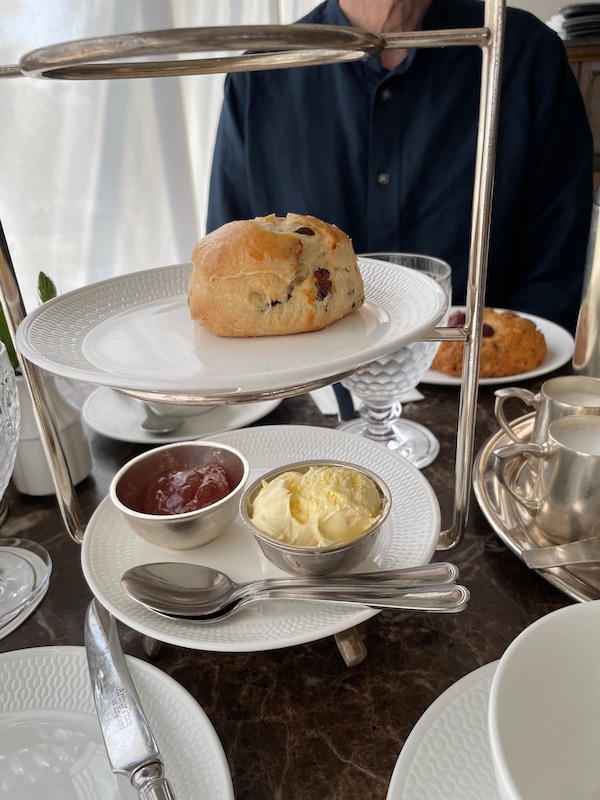
After a final night at our hotel in Pickering it was time for our long drive home. I’m sure there are lots of places I missed seeing on our trip; I had hoped to visit Castle Howard, a large stately home belonging to the Howard family, but it was closed to the public on the day we’d planned to go. Perhaps next time we’ll be luckier.
Do get in touch to let me know if you have any suggestions for places to visit on my next trip to Yorkshire.
